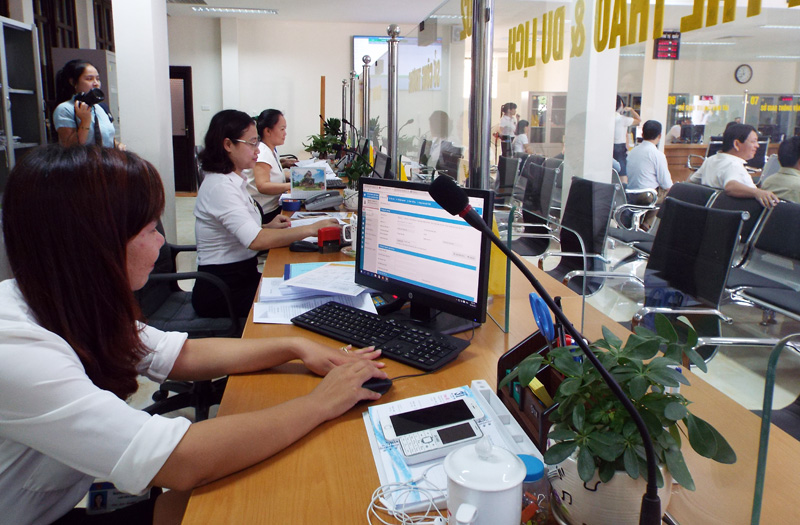
(HBO) – In compliance with the Party and State’s policies in recent years, the northern mountainous province of Hoa Binh has issued a number of mechanisms and policies to fuel the private economy.
They included procedures on investing in commercial housing, public-private partnership projects, incentives for cultivation and fish farming on Hoa Binh lake, agricultural and rural development, and many others that help improve the business climate.
Photo caption: the provincial public administrative centre was officially put into operation on August 1, 2017
The province has so far recorded nearly 2,800 businesses with a total registered capital of 29,382,092 billion VND, 82.5 percent of them are operating stably. Among 277 cooperatives, 155 are still working. There are 449 investment projects in the locality, including 29 foreign-invested ones worth 468 million USD and 420 domestic ones valued at 62,257 billion VND.
The domestic and foreign capital accounted for 67 percent of the total social investment. In 2016, the private economy with foreign direct investment (FDI) made up 48.8 percent of the gross regional domestic product and 63.24 percent of the local manufacturing value, attracting roughly 90.6 percent of the workforce.
However, the growth of the private economy tends to falter, especially those with FDI. Most of private firms have small and medium size, limited technological, governance and financial capacity, and weak competitiveness.
Based on the Party and State’s orientations, the province has directed concerned agencies to devise specific measures to develop the private sector into an important driving force of the local economy. The locality strives to have more than 4,000 firms and cooperatives by 2020 whose operation efficiency doubles that of 2015. Their contributions are expected to account for nearly 50 percent, 60 percent, 70 percent of the provincial gross regional development product by 2020, 2025, and 2030, respectively.
For the 2016-2020 period, corporate investment is expected to be equivalent to more than half of the total social investment while the labour output will increase nearly 8 percent annually on average.
In order to improve the business climate, the provincial authorities have directed specific measures to improve the efficiency of administrative reform, hold dialogues with firms and investors to clear their difficulties and provide them with all possible support, and encourage all economic sectors to engage in production and trade.
According to data from the Hoa Binh Provincial Party Committee, the industrial production index for the first six months of 2025 is estimated to have increased by 20% compared to the same period last year. This marks the highest year-on-year growth rate for this period since 2020.
In the first six months of 2025, Hoa Binh province’s export turnover was estimated at 1.145 billion USD, marking an 18.11% increase compared to the same period in 2024. Import turnover was estimated at $ 804 million, a 17.15% increase, which helped the province maintain a positive trade balance.
The lives of the ethnic minority farmers in Tan Lac district have gradually improved thanks to the new directions in agricultural production. This is a testament to the collective strength fostered through the professional associations and groups implemented by various levels of the district’s Farmers’ Union.
With the motto the "product quality comes first,” after nearly one year of establishment and operation, Muong village’s Clean Food Agricultural and Commercial Cooperative, located in Cau Hamlet, Hung Son Commune (Kim Boi district), has launched reputable, high-quality agricultural products to the market that are well-received by consumers. The products such as Muong village’s pork sausage, salt-cured chicken, and salt-cured pork hocks have gradually carved out a place in the market and they are on the path to obtaining the OCOP certification.
In the past, the phrase "bumper harvest, rock-bottom prices" was a familiar refrain for Vietnamese farmers engaged in fragmented, small-scale agriculture. But today, a new spirit is emerging across rural areas of Hoa Binh province - one of collaboration, organisation, and collective economic models that provide a stable foundation for production.
Maintaining growing area codes and packing facility codes in accordance with regulations is a mandatory requirement for agricultural products to be eligible for export. Recently, the Department of Agriculture and Environment of Hoa Binh province has intensified technical supervision of designated farming areas and packing facilities to safeguard the "green passport" that enables its products to access international markets.



